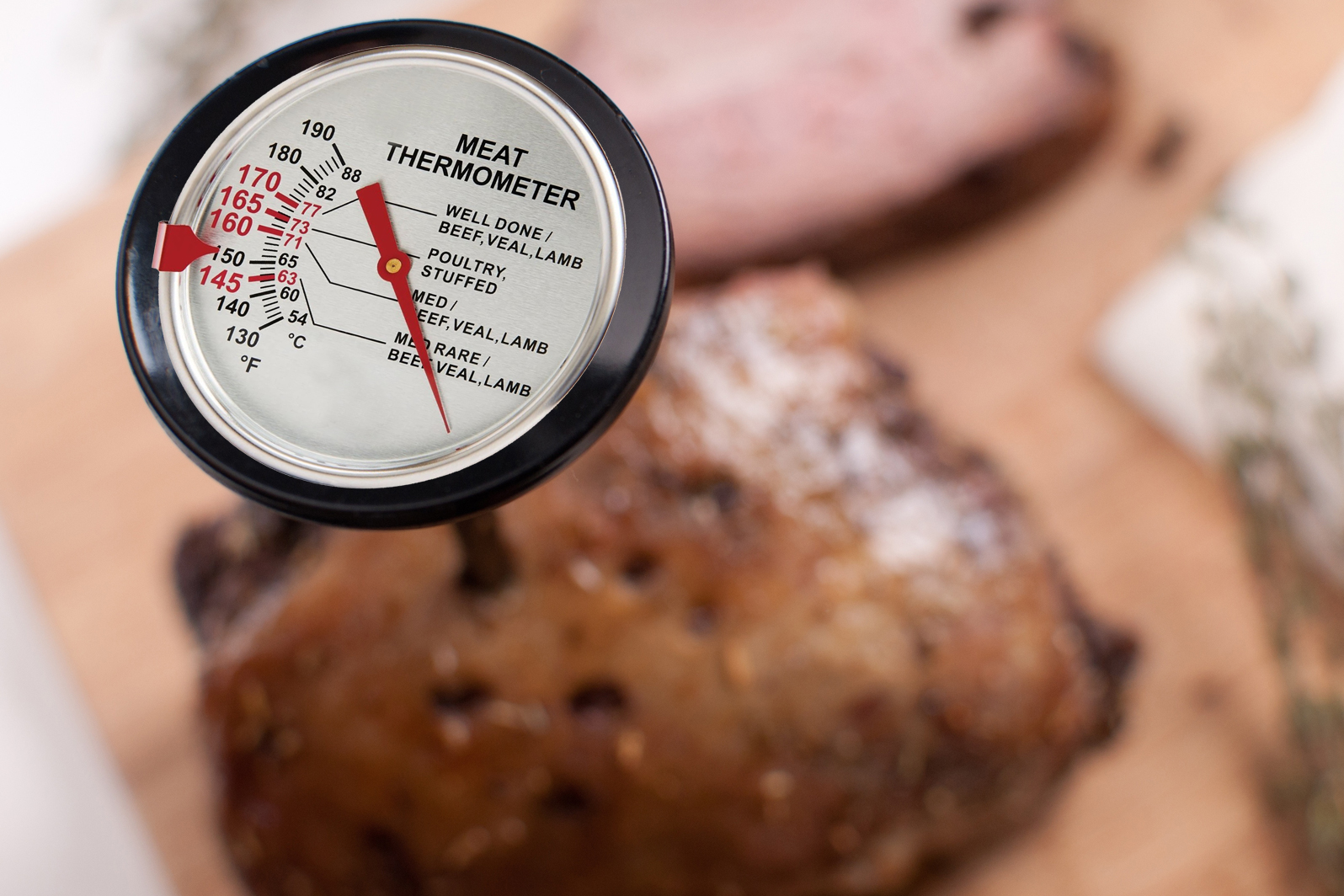30 Jun Lamb Cooking Temperatures Made Easy

Cooking lamb to perfection is an art that requires precision, and understanding the ideal cooking temperatures is key to achieving succulent and flavorful results. Whether you’re a seasoned chef or an aspiring home cook, mastering lamb cooking temperatures will elevate your culinary skills and impress your guests. In this post, we’ll delve into the recommended cooking temperatures for different cuts of lamb, providing you with a comprehensive guide to ensure a delectable dining experience.
Lamb Cooking Temperature Guidelines
To ensure food safety and to bring out the best flavors and textures in lamb, it’s crucial to follow the recommended cooking temperatures. Here are the guidelines to keep in mind. The internal temperature of cooked meat will rise after you remove it from the oven or grill, adjusting accordingly by pulling your lamb from the heat whenever it is 5-10 degrees lower than your desired doneness.
- Rare: For a tender and juicy cut, cook lamb to an internal temperature of 125°F (pull out at 120°F). This temperature produces a beautiful pink center.
- Medium Rare: Achieve a slightly more cooked but still pink and juicy result by cooking lamb to an internal temperature of 145°F (pull out at 135°F).
- Medium: For a more balanced and slightly pink interior, aim for an internal temperature of 160°F (pull out at 150°F).
- Medium Well: If you prefer lamb that is mostly pink with just a touch of doneness, cook it to an internal temperature of 170°F (pull out at 160°F).
- Well Done: For fully cooked lamb with no pinkness, cook it to an internal temperature of 170°F or higher.
Recommended Cooking Temperatures for Different Cuts
Each cut of lamb has its own characteristics, and understanding the ideal cooking temperatures for specific cuts will help you achieve the best results. Here are some common cuts and their recommended cooking temperatures:
- Bone-in Leg of Lamb (5–7lbs): Roast at 325˚F to an internal temperature of 145°F for medium-rare (20–25 min/lb), 160°F for medium (25–30 min/lb), 170°F for well-done (30–35 min/lb). For a boneless leg of lamb, aim for the same temperature, but adjust cooking time accordingly.
- Lamb Chops (1—1.25″ thick): Broil or grill lamb chops to an internal temperature of 145°F for medium-rare doneness (9—12 min/lb).
- Shoulder Roast (3—4lbs): Broil or grill lamb should roast to an internal temperature of 145°F for medium-rare doneness (9—12 min/lb).
- Lamb Cubes (1—1.5″ thick): Broil or grill lamb cubes to an internal temperature of 145°F for medium-rare doneness (8—12 min/lb).
- Ground Lamb (4 oz.): Roast at 325˚F to an internal temperature of 145°F for medium-rare (20–25 min/lb), 160°F for medium (25–30 min/lb), 170°F for well-done (30–35 min/lb).
Importance of Using a Meat Thermometer
To accurately measure the internal temperature of lamb, it is highly recommended to use a meat thermometer. This helps ensure that you achieve precise cooking temperatures, avoiding undercooked or overcooked meat. Insert the thermometer into the thickest part of the lamb, away from any bones or fat, to get an accurate reading.
Resting and Carryover Cooking
After reaching the desired internal temperature, it’s essential to let your lamb rest for a few minutes before carving or serving. Resting allows the juices to redistribute, resulting in a more flavorful and tender final dish. Additionally, carryover cooking will occur, meaning the internal temperature of the lamb will continue to rise even after removing it from the heat source. Taking this into account will help you achieve the perfect level of doneness.
Mastering lamb cooking temperatures is the key to preparing a memorable lamb dish that is tender, succulent, and bursting with flavor. By following the recommended internal temperatures and using a meat thermometer, you can ensure both food safety and an exceptional dining experience. Whether you’re cooking a leg of lamb, lamb chops, or ground lamb, these guidelines will help you achieve the desired level of doneness every time!

